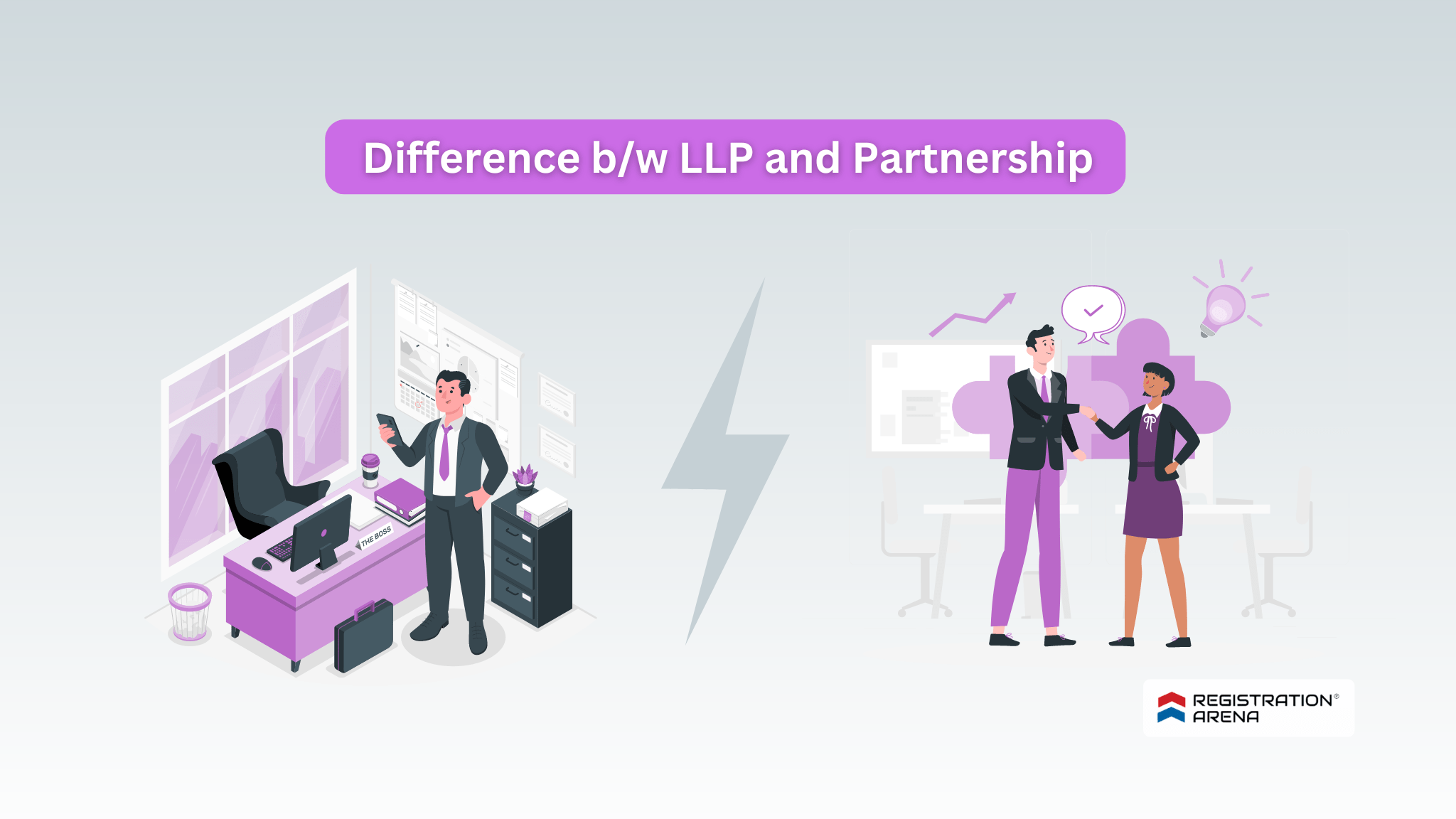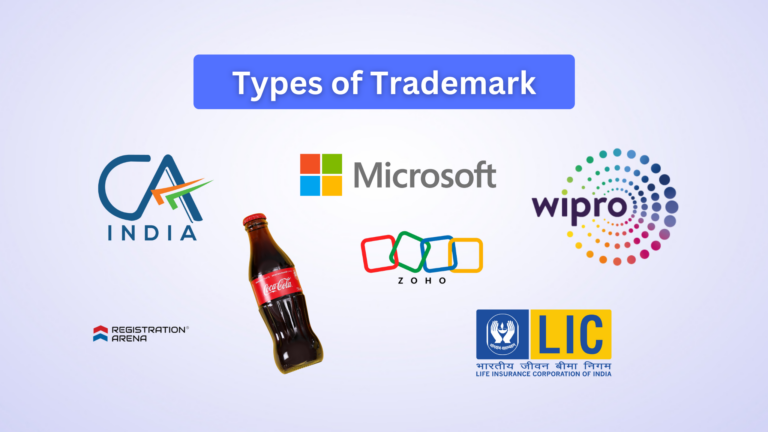Introduction
Selection of the form of business entity is one of the most important decisions before starting a business. The choice amongst the various forms of business entities depends upon many aspects such as objects of the proposed business, number of members, amount to be invested, scale of operations, state control, legal requirements, tax implications, advantages of one form of business over another, etc.
When two or more individuals decide to start a business, establishing a Partnership Firm is one of the options. According to the Indian Partnership Act 1932, a partnership is defined as a relationship between individuals who have consented to share the profits of a business. This business can be conducted by all partners collectively or by any one of them on behalf of the group.
Alternatively, the Limited Liability Partnership (LLP) structure, introduced by the Limited Liability Partnership Act, 2008, has also become increasingly popular. The Limited Liability Partnership Act, 2008 (LLP Act) does not offer a comprehensive definition. According to subsection (n) of section 2 of the Act, a “limited liability partnership” refers to a partnership that is established and registered under this Act. An LLP combines the benefits of a limited liability company with the flexibility of a partnership.
A key advantage of an LLP is that any liability is the responsibility of the entity itself and does not extend to individual partners, unlike in the traditional partnership model regulated by the Indian Partnership Act, 1932, where partners may share joint and several liabilities. The Limited Liability Partnership (LLP) is considered a separate legal entity and is liable to the full extent of its assets. However, the liability of the partners is limited to the amount they have agreed to contribute to the LLP
In this Article, let us understand the features, advantages, disadvantages, differences, suitability with respect to LLP and Partnership
What is Limited Liability Partnership
The Limited Liability Partnership (LLP) setup in India, is governed by the Limited Liability Partnership Act of 2008. LLP itself is legally separate from its partners, and its liability is limited to its own assets. Each partner’s liability is restricted to their agreed-upon contribution to the LLP.
Importantly, partners are shielded from being held personally liable for the independent or unauthorized actions of their fellow partners. This means that one partner’s wrongful decisions or misconduct cannot create joint liability for the other partners. Limited Liability Partnership is managed as per the LLP Agreement.
However, in instances where such an agreement is absent, the LLP operates under the provisions specified in Schedule 1 of the Limited Liability Partnership Act, 2008 which specifies the framework concerning the mutual rights and duties of LLP partners, as well as those of the LLP itself. The following are the key features of LLP:
- The LLP is a separate legal entity distinct from its partners and enjoys perpetual succession.
- Governed by the Limited Liability Partnership Act, 2008 in India, it is not subject to the provisions of the Indian Partnership Act, 1932.
- Each Limited Liability Partnership must include “Limited Liability Partnership” or “LLP” as the last words in its name.
- An LLP is formed through an agreement among its partners, determining their rights and duties, subject to the LLP Act, 2008.
- The LLP is liable to the full extent of its assets, with partners’ liability limited to their contributed amount, akin to a company. However, if the LLP is formed for fraudulent purposes, the partners with knowledge face unlimited liability.
- At least two designated partners, one of whom must be a resident of India, are required in every LLP.
- Annual accounts must be maintained to reflect the LLP’s financial status, with a statement of accounts and solvency filed annually with the Registrar.
- The Central Government may appoint an Inspector to investigate the affairs of an LLP if deemed necessary.
- Firms, private companies, or unlisted public companies have the option to convert into LLPs, with all assets and obligations transferred to the new entity upon conversion.
- An LLP can be voluntarily wound up or through proceedings under the Companies Act, 2013.
- The LLP Act 2008 empowers the Central Government to apply provisions of the Companies Act when deemed appropriate.
- The Foreign Direct Investment (FDI) policy on LLPs was amended in 2015 to provide that investments in LLPs will not require Government approval in certain sectors.100% FDI is allowed via automatic route in case the LLP is involved in certain sectors as prescribed under the FDI Regulations.

Read more: Process of LLP Registration
Advantages of LLP
Easy Formation
Forming an LLP is a straightforward process, less complicated and time-consuming compared to forming a company.
No Minimum Capital Requirement
LLPs do not have a compulsory minimum capital contribution, providing flexibility in starting the business.
Limited Liability
Partners have limited liability, meaning they are not responsible for the debts of the LLP with their personal assets. Each partner’s liability is limited, and one partner is not held accountable for another partner’s misconduct.
Perpetual Succession
The existence of a Limited Liability Partnership (LLP) remains unaffected by events such as the death, retirement, or insolvency of its partners. The LLP will only be dissolved according to the provisions outlined in the LLP Act, 2008.
Management of the LLP
In an LLP, the business is owned and managed by its designated partners. A designated partner is an individual who is appointed by an LLP to manage the business of the entity.
Easy Transferability of Ownership
There are no limitations on joining or leaving an LLP. It’s simple to become a partner, leave the firm, or transfer ownership to others.
No mandatory Audit Requirement
In the case of an LLP, there isn’t a mandatory audit requirement as compared to a company. An audit is only mandatory if the LLP’s turnover exceeds Rs 40 lakhs or if the contribution surpasses Rs 25 lakhs.
Fewer Compliance Requirements
Running an LLP is simpler and more cost-effective as LLPs typically have only three compliance obligations per year.
Flexible Agreement
Partners have the freedom to draft the LLP agreement according to their preferences, outlining their rights and responsibilities as they see fit.
Easy to Strike Off the LLP
Striking off an LLP is simpler by filing E-Form 24 with the Registrar along with requisite documents making the process more straightforward.
Disadvantages of LLP

Inability to Raise Funds from the Public
Unlike public companies, LLPs cannot raise funds from the general public through the issuance of shares or other securities. This limitation can restrict the LLP’s ability to raise capital for expansion or investment in the same way that companies can by selling shares on the stock market.
Public Disclosure of LLP Information
An LLP is required to annually submit its Annual Returns, Financial Statements, and other relevant documents to the Registrar of LLPs. Once filed with the Registrar, these documents become public records accessible to the general public, including competitors, upon payment of a prescribed fee.
Such disclosure may potentially disadvantage the LLP competitively, as competitors, particularly those not obligated to disclose similar documents, can access and utilize the information to enhance their own business strategies.
Fees and Penalties
According to the Limited Liability Partnership Act, 2008, failure to comply with procedural requirements, such as delays in filing e-forms, incurs a default fee for each day of delay. This fee amounts as follows:
Additional Fees for Delay in Filing Forms:
| Period of Delay | Small LLP’s | Other than Small LLP’s |
| Upto 15 days | One-Time | One-Time |
| Beyond 15 days and within 30 days | 2 times of regular filing fees | 4 times of regular filing fees |
| Beyond 30 days and within 60 days | 4 times of regular filing fees | 8 times of regular filing fees |
| Beyond 60 days and within 90 days | 6 times of regular filing fees | 12 times of regular filing fees |
| Beyond 90 days and within 180 days | 10 times of regular filing fees | 20 times of regular filing fees |
| Beyond 180 days and within 360 days | 15 times of regular filing fees | 30 times of regular filing fees |
| Beyond 360 days for forms other than form 11 and form 8 | 25 times of regular filing fees | 50 times of regular filing fees |
| Beyond 360 days for filing form 11 and form 8 | 15 times regular filing fees plus 10 per day for delay beyond 360 days | 30 times regular filing fees plus 20 per day for delay beyond 360 days |
Potential Liability Extending to Personal Assets
While LLPs offer limited liability protection to their partners, there are situations where partners can be held personally liable for the debts or obligations of the LLP. This typically occurs in cases of fraud, negligence, or when personal guarantees are given. In such instances, the personal assets of partners may be at risk.
Lack of Separation of Management from Owners
In LLPs, there is often no clear separation between management and ownership. Unlike companies where shareholders appoint directors to manage the company, in LLPs, partners usually manage the business themselves. This lack of separation can lead to potential conflicts of interest and difficulties in decision-making, especially in larger partnerships.
Binding Acts of Partners
Each partner in an LLP has the authority to bind the partnership through their actions. This means that the actions of one partner, even without the consent of the others, can legally bind the LLP. This lack of centralized control can lead to potential conflicts and mismanagement within the partnership.
What is Partnership?
A partnership is a collaboration between two or more individuals who agree to combine their financial resources and managerial abilities to run a business and share profits in an agreed ratio from a lawful business, managed and operated by all or some of them on behalf of the group.
Since the resources of a sole proprietor to finance, and his capacity to manage a growing business are limited, one can think of forming a partnership firm. Partnership business, therefore, usually grows out of the need for expansion of business with more capital, better supervision and control, division of work, and sharing of risks.
People with similar backgrounds or diverse skills may come together to run a business. Each member is called a “partner,” and collectively they form a “partnership firm.” These firms are regulated by the Indian Partnership Act, 1932.
Features of Partnership

Number of Partners
A partnership requires a minimum of two individuals to initiate the business.
Existence of an Agreement
Partnership is established through a formal agreement between two or more individuals to conduct business activities. This agreement, known as the Partnership Deed, outlines the terms and conditions of the partnership.
Engagement in Business
A partnership is formed for the purpose of carrying out business activities, which can include various trades, industries, or professions. The primary goal is to generate profits through the production and/or distribution of goods and services.
Competence of Partners
Partners must be legally competent to enter into a contract. Minors, lunatics, and insolvent individuals are ineligible to become partners, although a minor can receive a share in profits.
Sharing of Profits and Losses
Partners in a firm are entitled to share in the profits generated by the business, as well as bear any losses incurred during operations.
Agency Relationship
Partnership involves an agency relationship where each partner acts as both a principal and an agent. This means that partners can conduct business on behalf of the firm and bind it legally through their actions.
Unlimited Liability
Partners have unlimited liability, making them jointly and severally responsible for the firm’s debts and obligations. Creditors can claim against the personal assets of any partner. Minors’ liability is limited to their share of profits in case of dissolution.
Restriction on Transferability of Share
Partners cannot transfer their share in the partnership to outsiders without the consent of all other partners.
Legal Status
A partnership firm is not recognized as a separate legal entity distinct from its partners. The firm and the partners are considered synonymous in the eyes of the law.
Voluntary Registration
Although not mandatory, partnership firms can be registered with the Registrar of Firms if the partners decide to do so. It offers several benefits such as enabling partners to file cases against each other or outsiders in disputes.
Dissolution of Partnership
Dissolution involves the closure of a partnership business or any change in the existing agreement due to alterations in the number of partners.
Duration of Partnership
The duration of a partnership depends on the mutual agreement of the partners. Legally, a partnership ends with the death, retirement, or insolvency of a partner. However, if the remaining partners agree, the firm can continue its operations even after the departure of a partner.
Read more: Advantages and Disadvantages of Partnership
Difference between LLP and Partnership Firm
LLP and Partnership might look similar, but there are several differences between the two. The following table shows the difference between LLP and Partnership.
| Particulars | LLP | Partnership |
| Governing Law | LLP is governed under Limited Liability Partnership Act 2008 | Partnership is governed under Partnership Act, 2008 |
| Registration | Incorporation of LLP is mandatory. It is required to be registered with the Ministry of Corporate Affairs under the LLP Act, 2008. | Registration of partnership is not mandatory.However, if the partners so decide, it may be registered with the Registrar of Firms. |
| Separate Legal Entity | In a Limited Liability Partnership (LLP), the firm is a legal entity separate from its partners. It can hold property in its own name and sue or be sued in its own name. | In a partnership, the firm is not a legal entity separate from its partners. It cannot hold property in its own name and can only do so in the names of the partners. |
| Liability | Partners have limited liability, so they are not responsible for the debts of the LLP with their personal assets. Each partner’s liability is limited, and one partner is not held accountable for another partner’s misconduct. | In a partnership, each partner has unlimited liability, meaning they are personally responsible for all the debts and obligations of the partnership |
| Number of Partners | There must be a minimum of two designated partners in every LLP of whom one shall be resident in India. There is no limit on maximum number of designated partners. | A partnership firm can be formed with a minimum of two partners and it can have a maximum of fifty partners. |
| Governing Document | The governing document of an LLP is the LLP agreement, registered with MCA, but it is not a public document | The governing document of Partnership Firm is the Partnership deed, also known as a partnership agreement, a document that outlines in detail the rights and responsibilities of all parties to a business operation. |
| Administrative Authority | MCA/ROC LLP is the administrative ministry/authority | Documents are required to be filed with the Registrar of firms (of respective states). |
| Audit | As per the LLP Act,2008 Audit is required when annual turnover exceeds Rs 40 Lakhs and Capital Contribution exceeds 25 Lakhs | While the Indian Partnership Act of 1932 doesn’t mandate audits for partnership firms, many firms choose to have their accounts audited in practice. However, according to the Income Tax Act of 1961, a tax audit is compulsory for partnership firms if their turnover or gross receipts exceed Rs 1 Crore for business or Rs 25,00,000 for professions. |
| Agent Relationship | In a Limited Liability Partnership (LLP),each partner is an agent only of the firm and not of the other partners. | In a partnership, every partner is considered an agent of the firm and of the other partners |
| Existence or Survivability | Existence not dependent on partners. Can be dissolved voluntarily or by order of the NCLT. | Partnership existence is dependent on partners. Can be dissolved at will or upon on the death of partner(s) |
| Foreign Nationals | Foreign National can form LLP in India. However they must have at least one person residing in India to act as a Designated Partner. | Foreigners cannot form partnership in India. |
| Annual Return | LLP Form 11 for annual return is required to be filed within 60 days from the end of the financial year i.e 30th May | No such requirement |
| Statement of Account and Solvency | LLP Form 8 for statement of account and solvency is required to be filed within 30 days from the end of 6 months of the financial year to which it relates i.e 30th October | No such requirement |
| Register of Partners | Every LLP must maintain a register of its partners in Form 4A from the date of its incorporation. | No such requirement |
| Dissolution | LLP is to be wound up and dissolved as per the LLP Act | Partnership Firm can be dissolved as per the Act/ Partnership Deed |
For more information read: Benefits of LLP over Partnership
Suitability of LLP
- The flexibility of structure and operations makes LLPs advantageous for small and medium-sized enterprises, particularly those in the service sector.
- Professionals such as company secretaries, chartered accountants, cost accountants, advocates, etc., find LLPs suitable as they can establish multidisciplinary limited liability partnership firms.
- Startups often choose LLPs because they offer a balance between the benefits of a corporate structure and the simplicity of a partnership.
- LLPs can be used for joint ventures where multiple parties collaborate on a specific project while limiting their liability.
Suitability of Partnership Firm
- Partnership firms are particularly suitable for relatively small businesses, including retail and wholesale trade, professional services, medium-sized mercantile houses, and small manufacturing units.
- Many organizations initially start as partnership firms due to their flexibility and ease of formation.
- As businesses grow and become economically viable, they may choose to convert into a company to attract investors and expand further.
- Partnership is well-suited for medium-scale business operations.
- It is ideal for ventures requiring more capital and involving higher risks.
- Compared to sole proprietorship or Hindu Undivided Family setups, partnership provides a suitable structure for such businesses.
Taxability of LLP and Partnership Firm
Partnership firms, including Limited Liability Partnership (LLP) firms, are subject to income tax at a rate of 30% on their total income. When the total income exceeds Rs. 1 crore, a surcharge of 12% is levied on the income tax amount.
However, this surcharge is subject to marginal relief, ensuring that the total tax and surcharge do not exceed the tax payable on an income of Rs. 1 crore by more than the income exceeding Rs. 1 crore. In addition to income tax and surcharge, LLP and partnership firms must also pay health and education cess @ 4% charged on the amount of income tax + surcharge being paid.
Conclusion
In conclusion, whether to opt for an LLP or partnership depends on various factors such as the ease of formation, nature of the business, the number of partners involved, liability concerns, administrative requirements involved. LLPs provide limited liability and a more formalized structure whereas Partnerships offer simplicity and flexibility but come with unlimited liability.
Ultimately, businesses should carefully consider their specific needs, risk tolerance, and long-term goals when choosing between these two business structures. Need guidance on choosing a business structure, registration, and compliance?
For further information, feel free to reach out to us.









